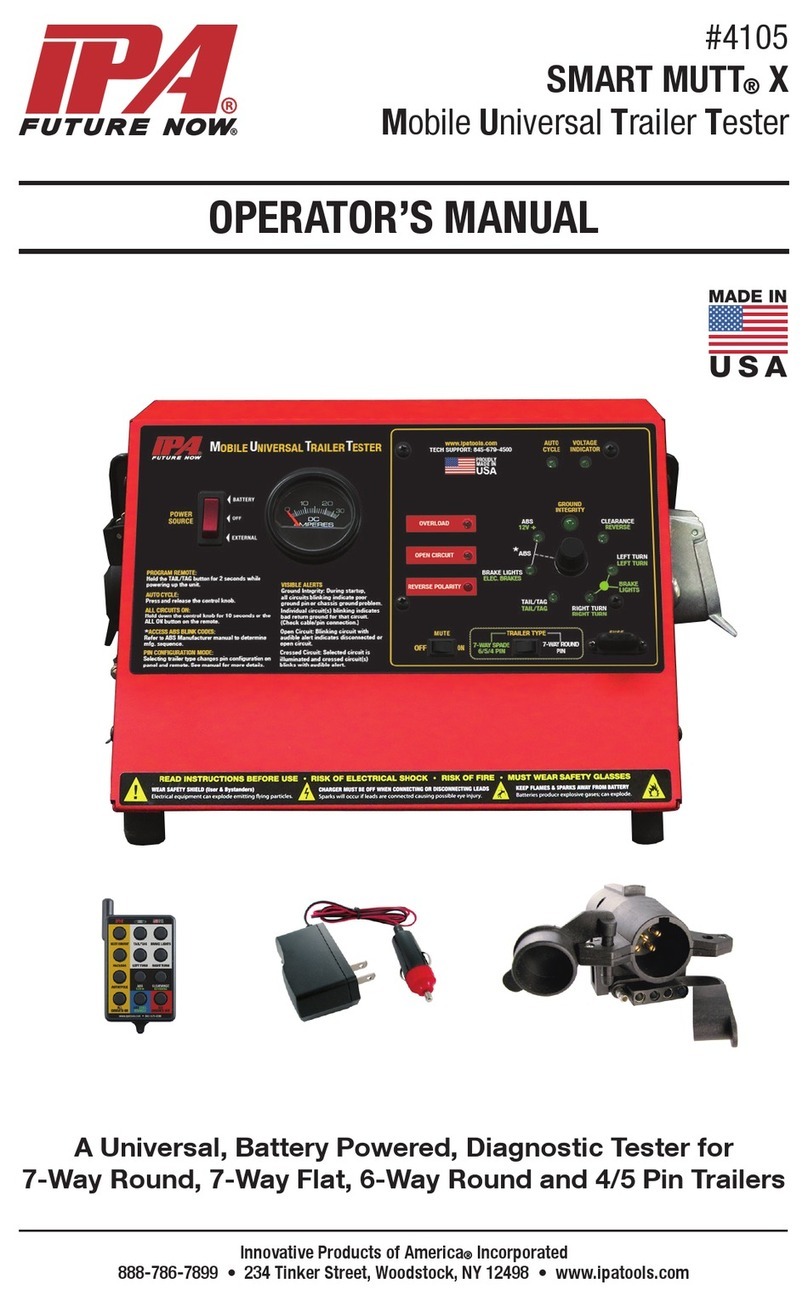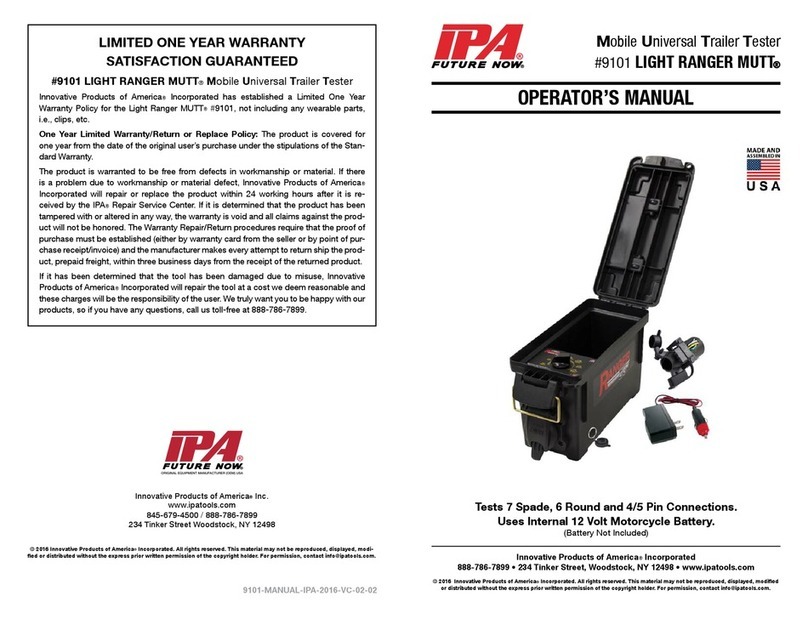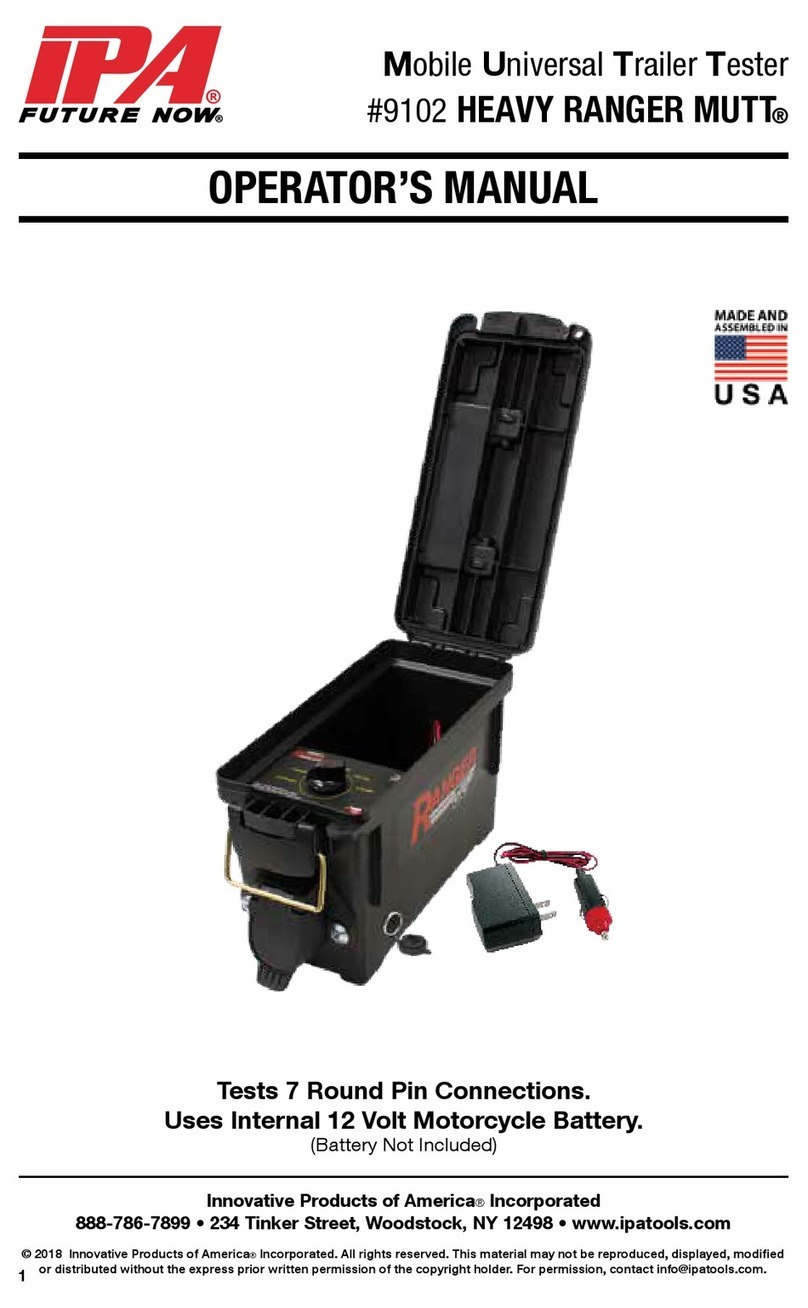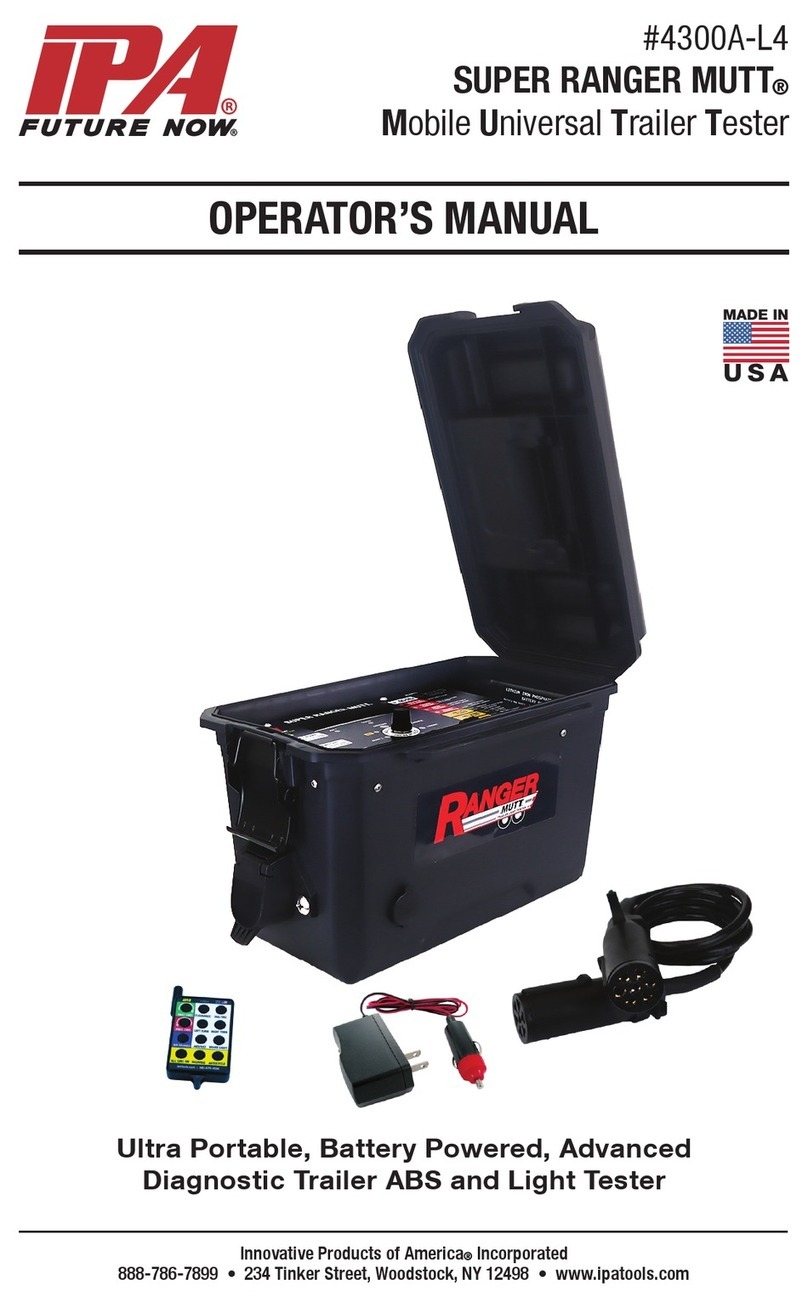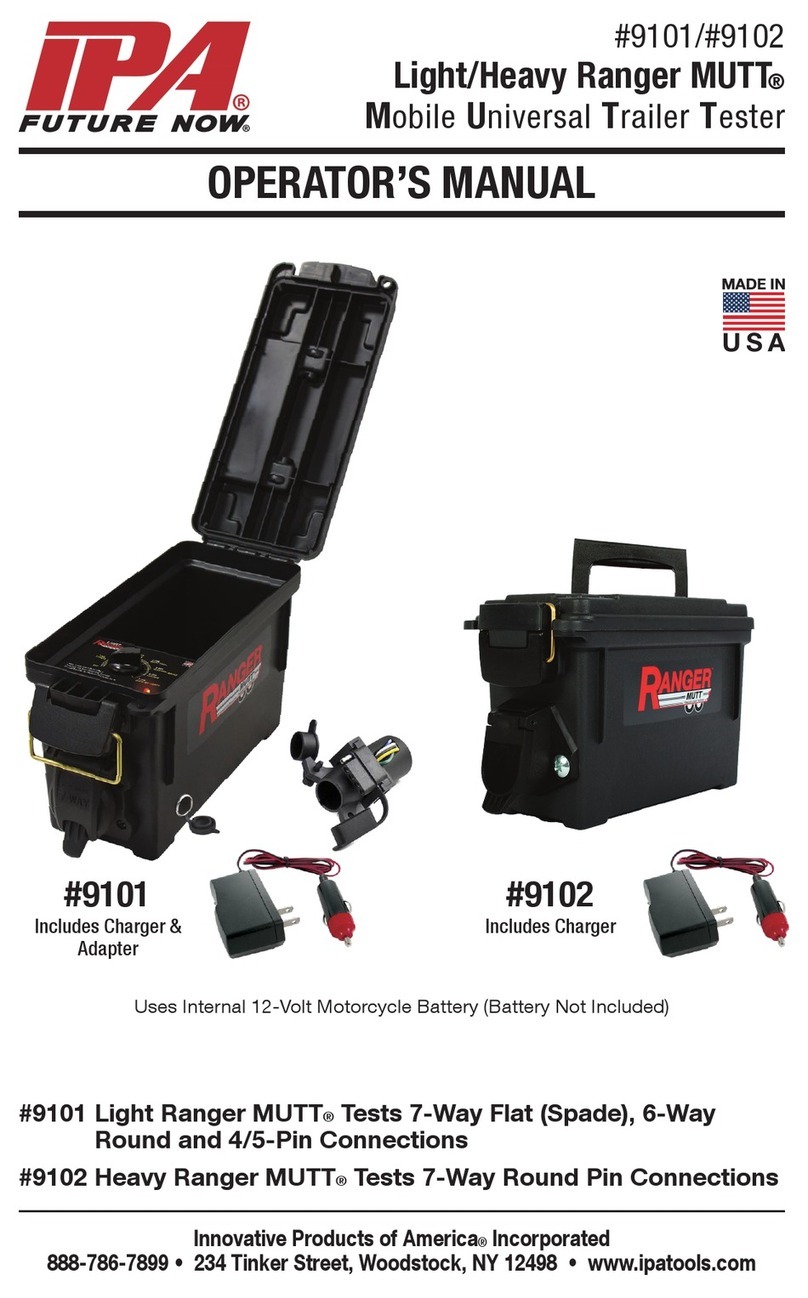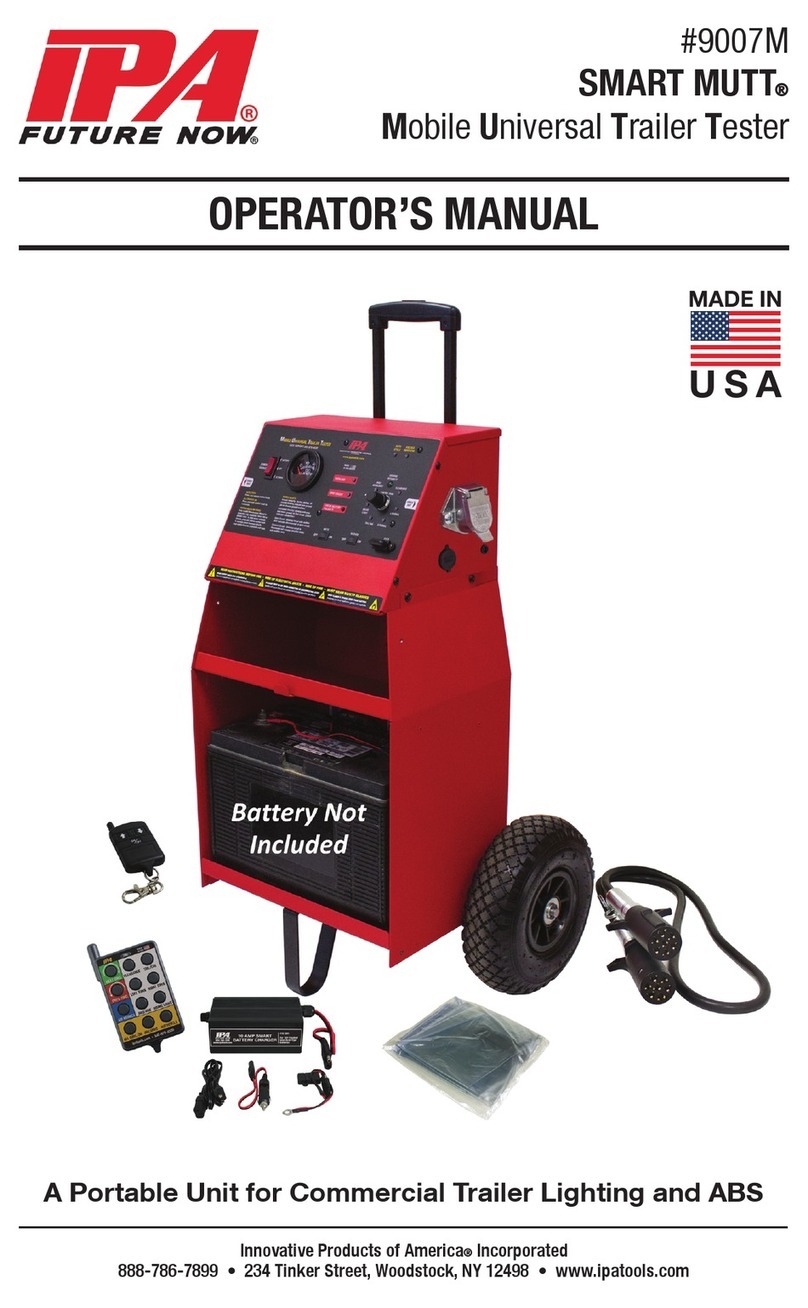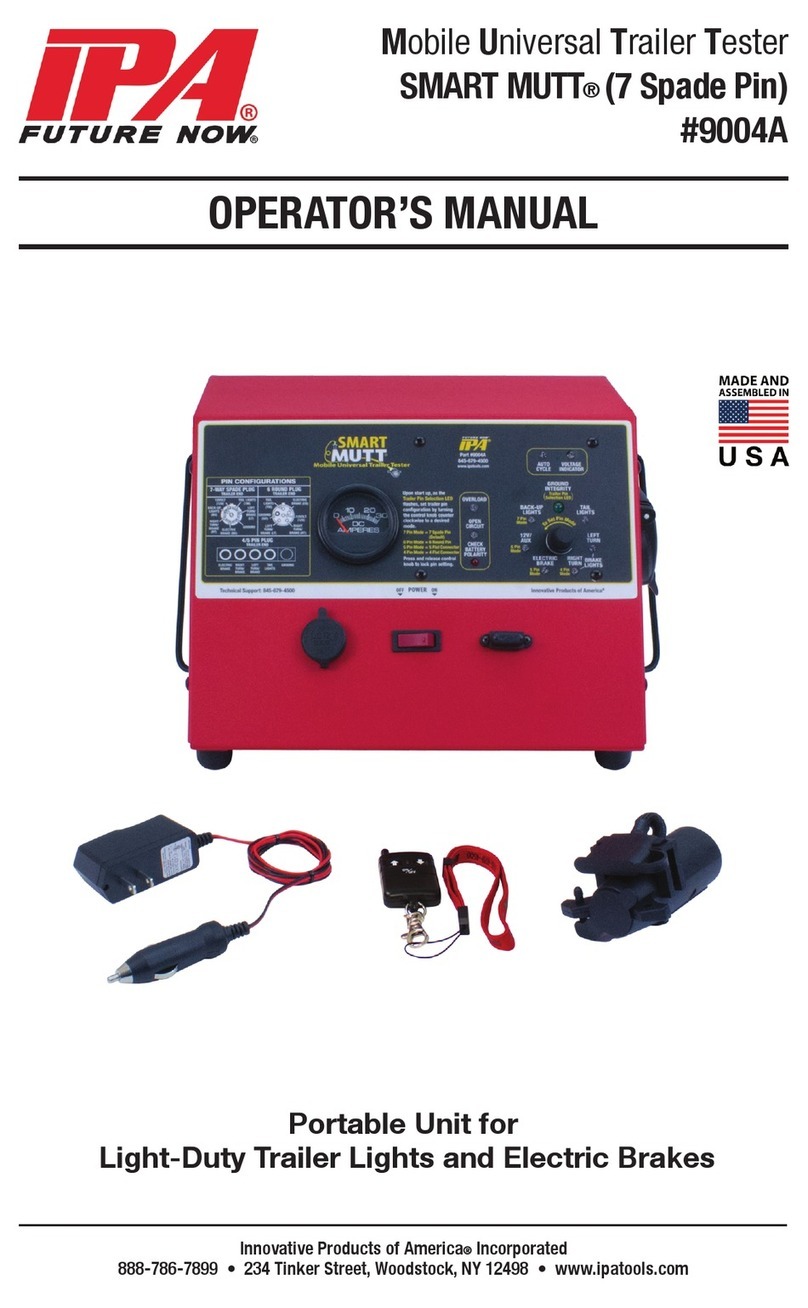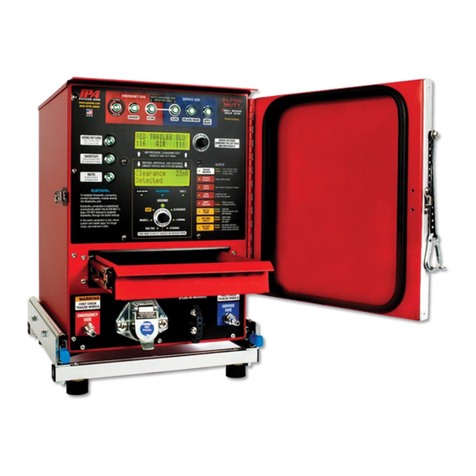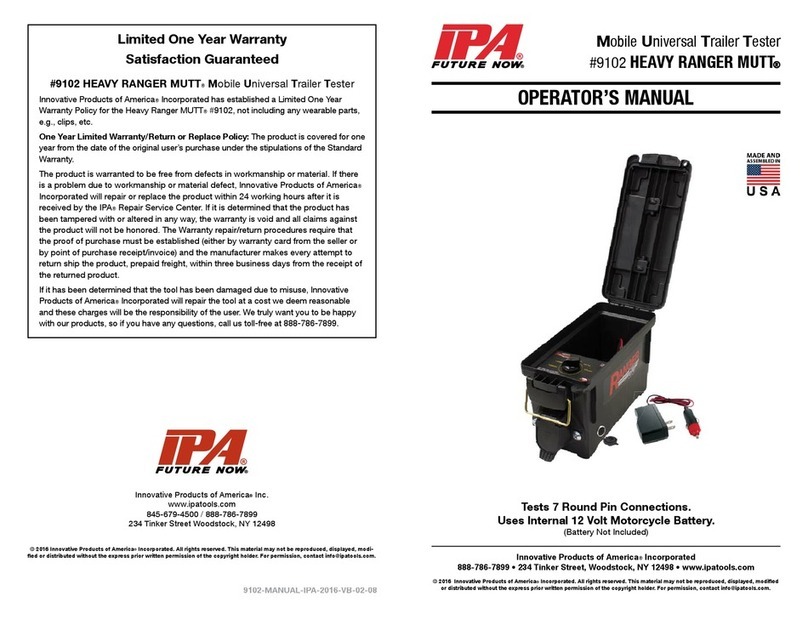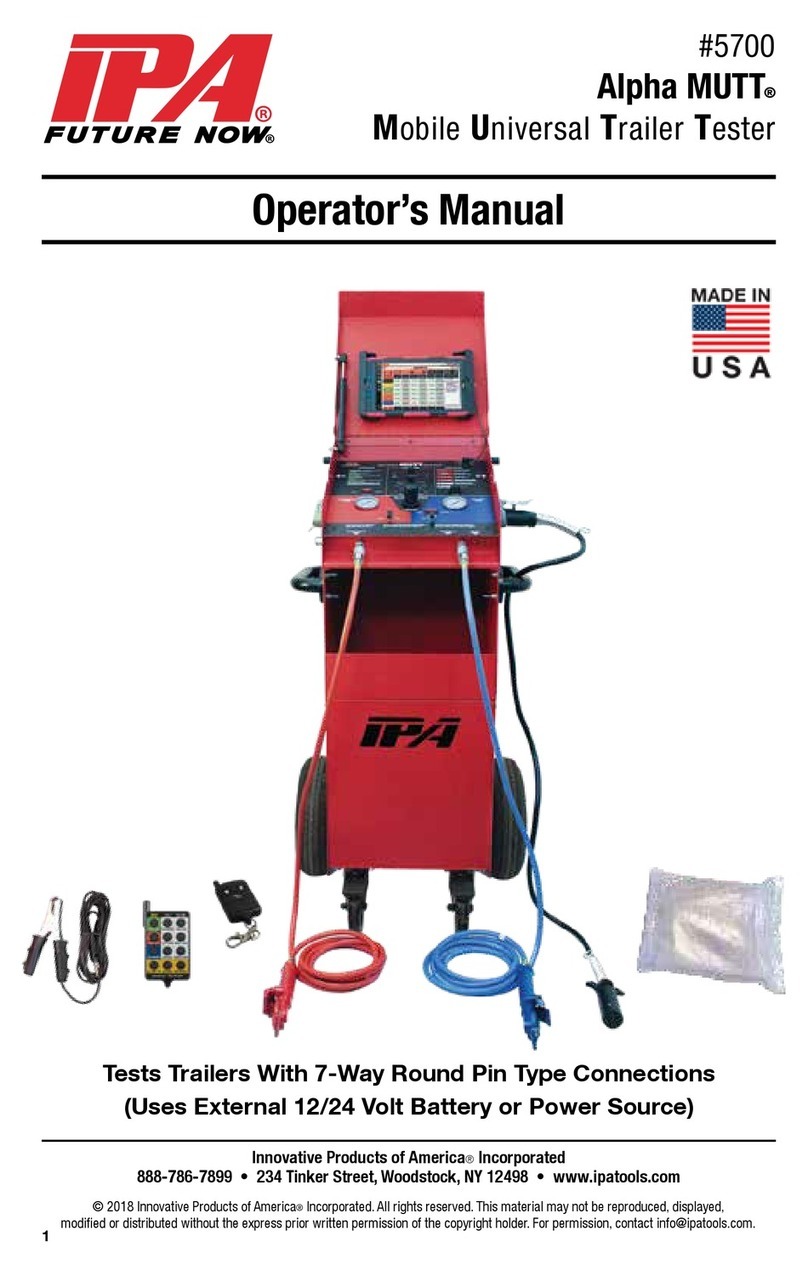
Introduction
1.1 Testing Functions ……………………...……………………………………...................
1.2 Registering Your Tester’s Warranty ……………….…………………......................…
1.3 Tester Identication ………………………………………………………......................
Tester Serial Number on Shop Models
Tester Serial Number on Bench-Top Models
Firmware Version Number
Software Version Number
1.4 Included Accessories ………………………...…….…………………......................…
1.5 Optional Accessories ……...……………………….………………..........................…
General Safety Instructions
2.1 Important Safety Information ……………...…..…...………………........................…
2.2 Battery Gases, Tester Preparation and Tester/Charger Location …...................….
2.3 General Charger Usage …………………………………………….......................…...
Specications
3.1 Shop Models ……………………………………………………….......................….....
3.2 Bench-Top Models …………………………………………………..........................…
3.3 Standard Tablet ………………………………………………………........................…
3.4 Rugged Tablet ………………………………………………………………...................
Initial Set-Up
4.1 Basic Battery Information ………………….………......................……………………
Standard 12-Volt Wiring Conguration
Optional 24-Volt Wiring Conguration
4.2 Charging with the AC Plug ………………………………………........................…..…
4.3 Attaching and Stowing the 7-Way Cable on Shop Models ………….......................
4.4 Attaching and Stowing the Gladhand Hoses on Shop Models ……........................
4.5 Connecting Shop Air to the Tester ……………………………........................………
4.6 Face Shield/Lid ……………………………………………………….........................…
For Shop Models
For Bench-Top Models
4.7 Bench-Top Model Mounting Options …………………………......................….……
Carry Handle Option
Bottom Mount Option
Back Mount Option
General Controls And Operations
5.1 Electrical Control Panel (All Models) …………………………….........................……
Mechanical Functions
Auto Shutdown Feature
5.2 Air Brake Control Panel on Shop Models ……………………………….....................
5.3 Left, Right and Back Panels on Shop Models …………………….........................…
5.4 Air Brake Control Panel on Bench-Top Models …………………........................…..
5.5 Left, Right and Back Panels on Bench-Top Models ……………………...................
5.6 Remote Controls ……………………………………………………………...................
How to Program the 12-Button Remote
How to Use the 12-Button Remote
5.7 Tablet Controls ……………………………………………………………..................…
Tablet Buttons
Power Saving
Bluetooth®Connection (BLE)
How to Charge the Tablet with the AC Plug
How to Charge the Standard Tablet while Mounted to Steel Face Lid
How to Charge the RT Tablet while Mounted to Steel Face Lid
How to Check for Software Updates
Email to Tablet
Computer to Tablet
Direct to Tablet
TABLE OF CONTENTS
Part 1:
Part 2:
Part 3:
Part 4:
Part 5:
Pg.
1-1
1-2
1-3
1-4
1-5
2-1
2-2
2-2
3-1
3-1
3-2
3-2
4-1
4-2
4-3
4-3
4-4
4-4
4-5
5-1
5-3
5-4
5-5
5-6
5-7
5-8

